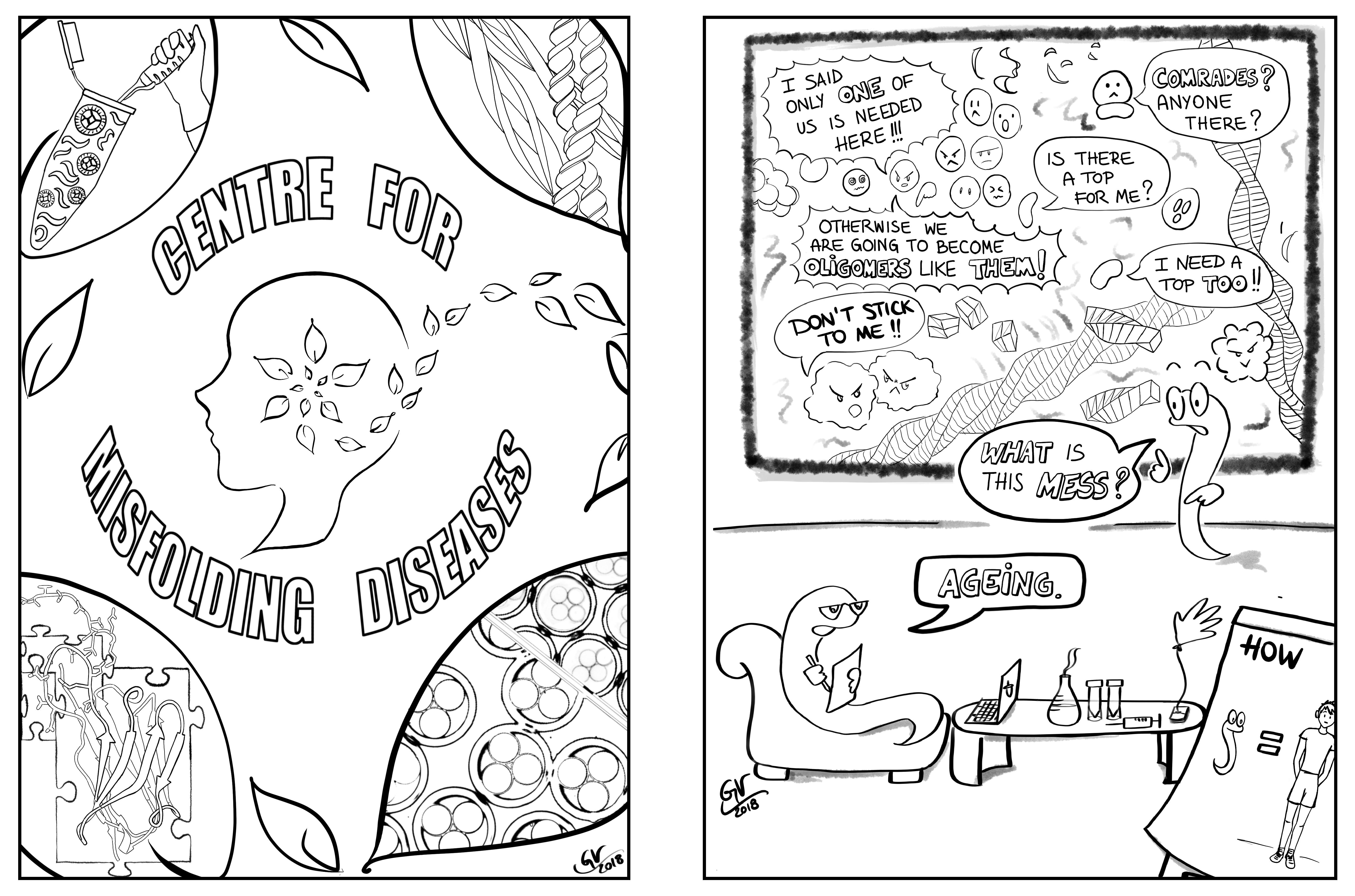
Members of the CMD each year participate in the Chemistry Open Day, as part of the Cambridge Festival.
CMD postdoctoral researcher Giulia Vecchi created colouring images of our work, which were featured in the "Central Science" Colouring Book that was distributed in the Department of Chemistry at the Chemistry Open Day in 2018.

Misfolding diseases
Protein misfolding disorders, such as Alzheimer’s and Parkinson’s diseases, are increasingly common and currently incurable. The hallmark of these disorders is the aberrant assembly and subsequent accumulation in organs and tissues, notably the brain, of specific proteins into long thread-like structures called amyloid fibrils. In the Centre for Misfolding Diseases, we are directing our research activities towards understanding the molecular nature of these disorders and hence to finding rational means of preventing their onset or progression. We are a highly disciplinary and international team of scientists, including students, postdocs and visitors, and we use a very wide range of advanced techniques, both experimental and theoretical, to address these vital objectives.
Description of images
Giulia's work includes representations of experiments with nematode worms (C.elegans): these creatures are much more similar to humans than one might think! You can also find images of amyloid fibrils formed from proteins, how we design novel treatments using a rational computer-based technique, and screening compounds within tiny droplets using advanced microfluidic techniques. C. Elegans are transparent worms that are widely used as animal models to study what happens at the molecular level when we get old, since they are genetically quite similar to humans (much more than one might think!). In every cell of our body, proteins are the parts that perform all the functions, giving us life. To be able to work properly, proteins have to be balanced in number among each other. As we age, however, this balance is loss, and protein aggregation occurs, which can result in neurodegeneration.
Designs by G. Vecchi

